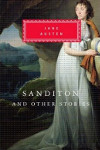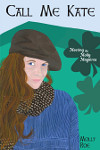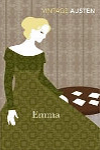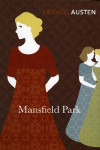Jane Austen – Sanditon
Posted 16th October 2019
Category: Reviews Genres: 1820s, Books About Books, Comedy, Drama
2 Comments

Austen’s potential finest?
Publisher: N/A
Pages: N/A
Type: Fiction
Age: Adult
ISBN: N/A
First Published: 1825
Date Reviewed: 9th October 2019
Rating: 5/5
Mr and Mrs Parker are travelling through Willingden in search of a doctor for their small town, Sanditon, when their carriage overturns. Mr Heywood comes to their rescue; the couple end up spending a fortnight at the Heywood family home as Mr Parker is injured. The two discuss with the Heywoods their fabulous residence, a burgeoning spa town in need of more visitors. When they leave they take with them Charlotte, the eldest child of the Heywood family.
Despite there being only eleven chapters, Austen’s last unfinished novel has a lot going for it, both in terms of enjoyment and inevitable contemplation. That the author finished work at the end of a chapter, a bog standard chapter at that (she’d still been setting up the scene), suggests, I reckon, a sudden downturn in her illness; it makes sense that she might’ve put her pen down at the end of that last day of writing with the intention of continuing either the next day or when she felt better. There are, so far as we know, no notes to suggest where the novel was headed.
So reading Sanditon is both a wonderful and a grounding experience. The eleven chapters are excellent, not so much in themselves (though there’s certainly nothing wrong with them), but in what they represent, the promise for the rest of the book. The text presents itself as a bit of a departure from the rest of Austen’s oeuvre. Whilst the author had previously used the seaside, mostly notably in Persuasion, Sanditon has a different atmosphere with its use of leisure, health, and tourism. There are a lot of previously-used devices in it – ‘poorly’ relatives who Austen is keen to show are just attention seekers; book-loving heroines; a potential second Lady Catherine de Burgh who has many relatives looking at her with pound signs in their eyes.
Austen is known to have lived in two spa towns – Bath and Southampton. With Sanditon situated on the coast around the Sussex/Hampshire area, closer to the middle of the coast than Eastbourne, it’s possible she looked to Southampton for at least part of her inspiration. Certainly it has been suggested that she preferred Southampton to Bath1. She stayed in Southampton three times, once in a house that was only a few minutes walk from the beach. (Southampton no longer has a beach – land has been reclaimed – but we know where the house stood and where the water originally came up to.) Whether based on Southampton or not, however, it’s interesting to ponder whether the now city might be more well known in the context of her life than it is had the book been fully realised. Either way, the descriptions of Sanditon are wonderful, full of atmosphere. Although there’s certainly more description in terms of people than place it’s not difficult to imagine the scene.
Sanditon contains echoes of the brilliance of Pride And Prejudice – might that book be less known if Sanditon had been completed? Interestingly, though, Charlotte says a lot less than Elizabeth; she’s more of a device. In Charlotte we can perhaps see further evidence, beyond Northanger Abbey, of Austen’s 18th century writer’s influences. Either way, at least in the chapters we have, Charlotte is more a device to show off Sanditon and its people than a character in her own right. This is quite different for Austen, so it is very possible that Charlotte was yet to come into her own. Perhaps Austen was playing a longer game, writing more slowly, planning a book more lengthy than her others.
Would Charlotte have overtaken Lizzie in our affections? One of the major themes is books. One of the first things the Parkers do upon returning home is visit the subscription library; Charlotte takes out a number of books including Frances Burney’s Camilla, which was also one of Catherine Morland’s reads and so likely Austen’s too. In her descriptions Austen mentions her favourite poet, Cowper, and Voltaire. She spends a chapter on Sir Edward Denham’s fiction preferences. This is where her wit shows best:
But if you will describe the sort of novels which you do approve, I dare say it will give me a clearer idea.”
“Most willingly, fair questioner. The novels which I approve are such as display human nature with grandeur; such as show her in the sublimities of intense feeling; such as exhibit the progress of strong passion from the first germ of incipient susceptibility to the utmost energies of reason half-dethroned—where we see the strong spark of woman’s captivations elicit such fire in the soul of man as leads him—though at the risk of some aberration—from the strict line of primitive obligations to hazard all, dare all, achieve all to obtain her. Such are the works which I peruse with delight and, I hope I may say, with amelioration. They hold forth the most splendid portraitures of high conceptions, unbounded views, illimitable ardour, indomitable decision. And even when the event is mainly anti-prosperous to the high-toned machinations of the prime character, the potent, pervading hero of the story, it leaves us full of generous emotions for him; our hearts are paralysed. T’were pseudo-philosophy to assert that we do not feel more enwrapped by the brilliancy of his career than by the tranquil and morbid virtues of any opposing character. Our approbation of the latter is but eleemosynary. These are the novels which enlarge the primitive capabilities of the heart; and which it cannot impugn the sense or be any dereliction of the character of the most anti-puerile man, to be conversant with.”
Really Edward, ‘I love epic romance’ would have sufficed…
There is so much to like about Sanditon, indeed the one and only drawback is that it ends with absolutely no clue as to where it was to end up except that someone will probably be given an inheritance by Lady Denham, and that if Austen has anything to do with it, Sir Edward is going to annoy Clara Brereton. If we consider that a marriage is a likely feature of Charlotte’s future then perhaps the arrival of the Parkers’ relative, Sidney, in the last paragraph, is a hint because it’s unlikely to be Sir Edward.
Footnotes
1 Local historian, Cheryl Butler, holds this view and believes it’s possible we don’t know more about Austen’s time in Southampton due to Cassandra’s burning of her letters. (Information learned from her talk ‘Jane Austen & Southampton Spa’ given at Cobbett Road Library, Southampton, in 2018.)
Related Books
November 4, 2019, 3:21 pm
Jessica: Enjoy! I first read Sanditon along with those shorter works and it was a lot of fun. So much variety and both like and very unlike reading her novels. I’ve only seen a minute or too of Sanditon but I liked the choice they seemed to make on hero. I’ll leave it there ;)
2 Comments
Comments closed




























October 22, 2019, 7:12 pm
I’ve recently got my hands on a copy of collection of Austen’s shorter works, including Sanditon. I am hoping to read this soon, so I can then watch ITV’s dramatization of it.